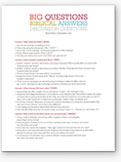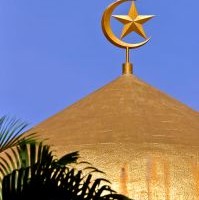
The Bible has references to strange creatures that match the description of dinosaurs. On day five, in Genesis 1:21 it says, “So God created the great creatures of the sea and every living and moving thing with which the water teems, according to their kinds.” The Hebrew word for “great creatures” is tannin; it means a great land or sea monster. God may be describing the marine dinosaurs He created. There are many other verses that use the word tannin: Psalm 74:13; 91:13; 148:7; Isaiah 27:1; 51:9; and Jeremiah 51:34. But the most interesting biblical references are found in the book of Job.
In order to show Job His greatness, God asks him to consider two great creatures. The first, behemoth, means “a large beast” and is found in Job 40:15-24:
“Look at the behemoth, which I made along with you and which feeds on grass like an ox. What strength he has in his loins, what power in the muscles of his belly! His tail sways like a cedar; the sinews of his thighs are close-knit. His bones are tubes of bronze, his limbs like rods of iron. He ranks first among the works of God, yet his Maker can approach him with his sword. The hills bring him their produce, and all the wild animals play nearby. Under the lotus plants he lies, hidden among the reeds in the marsh. The lotuses conceal him in their shadow; the poplars by the stream surround him. When the river rages, he is not alarmed; he is secure, though the Jordan should surge against his mouth. Can anyone capture him by the eyes, or trap him and pierce his nose?”
Hebrew scholars were not sure what the creature was, so they transliterated the Hebrew word behemoth into English. Reading the footnote will say “possibly the hippopotamus or elephant,” but those animals don’t fit the description exactly. Neither has a tail like a cedar tree, nor are they the largest land animals in existence. The very idea of capturing behemoth seems impossible, yet people can snare elephants and hippos. A better explanation of what this creature is would be a dinosaur—probably a brachiosaur.
Job 41:1-34 describes leviathan, which means “a great water animal.” In Job 41:1-2, it says, “Can you pull in the leviathan with a fishhook or tie down his tongue with a rope? Can you put a cord through his nose or pierce his jaw with a hook?” Later, in Job 41:31-34, it says, “He makes the depths churn like a boiling caldron and stirs up the sea like a pot of ointment. Behind him he leaves a glistening wake; one would think the deep had white hair. Nothing on earth is his equal–a creature without fear. He looks down on all that are haughty; he is king over all that are proud.”
As with behemoth, God was using leviathan to display His glory to Job. And once again, Hebrew scholars transliterated the word, so the footnote reads, “possibly the crocodile.” Yet the crocodile doesn’t fit the description well enough. People can hook them or tie them up. When crocodiles swim in the water, they don’t churn up the water like a boiling pot. And you would never say there is no equal to the crocodile on earth—unless this was a huge crocodile-like creature such as the 40 foot “Super Croc” Sarcosuchus imperator, or a large marine dinosaur like a plesiosaur. With both behemoth and leviathan, God showcases the awesome grandeur of His creative power. While elephants, hippos, and crocodiles are good, dinosaurs are even more impressive!
Therefore, we shouldn’t be confused by these creatures, nor feel that they belong only to an evolutionary worldview. There isn’t a 65 million year gap between dinosaurs and humans as the Secular Humanist worldview claims. On the contrary, dinosaurs fit perfectly into God’s creation along with humans on the sixth day. This is testified to not only in the pages of Scripture, but also in the fossil record, the historical record, and in sightings today. The biblical worldview map makes sense of the reality around us.
Learn how to defend your Christian Faith

Big Questions Biblical Answers Supplemental Materials
by Brad Alles
- November 2024
- August 2024
- July 2024
- June 2024
- September 2022
- August 2022
- July 2022
- June 2022
- May 2022
- April 2022
- March 2022
- February 2022
- January 2022
- December 2021
- November 2021
- October 2021
- September 2021
- August 2021
- July 2021
- June 2021
- May 2021
- April 2021
- March 2021
- February 2021
- January 2021
- December 2020
- November 2020
- October 2020
- September 2020
- August 2020
- July 2020
- June 2020
- May 2020
- April 2020
- March 2020
- February 2020
- January 2020
- December 2019
- November 2019
- October 2019
- September 2019
- August 2019
- July 2019
- June 2019
- May 2019
- April 2019
- March 2019
- February 2019
- January 2019
- December 2018
- November 2018
- October 2018
- September 2018
- August 2018
- July 2018
- June 2018
- May 2018
- April 2018
- March 2018
- February 2018
- January 2018
- December 2017
- November 2017
- October 2017
- September 2017
- August 2017
- July 2017
- June 2017
- May 2017
- April 2017
- March 2017
- February 2017
- January 2017
- December 2016
- November 2016
- October 2016
- September 2016
- August 2016
- July 2016
- June 2016
- May 2016
- April 2016
- March 2016
- February 2016
- January 2016
- December 2015
- November 2015
- October 2015
- September 2015
- August 2015
- July 2015
- May 2015
- April 2015
- March 2015
- February 2015
- January 2015
- December 2014
- November 2014
- October 2014
- September 2014
- August 2014
- July 2014
- June 2014
- May 2014
- April 2014
- March 2014
- February 2014
- January 2014
- December 2013
- November 2013
- October 2013
- September 2013
- August 2013
- July 2013
- June 2013
- May 2013
- April 2013
- March 2013
- February 2013
- January 2013
- December 2012
- November 2012
- October 2012
- September 2012
- August 2012
- July 2012
- June 2012
- May 2012
- April 2012
- March 2012
- February 2012
- January 2012












Comments are closed.